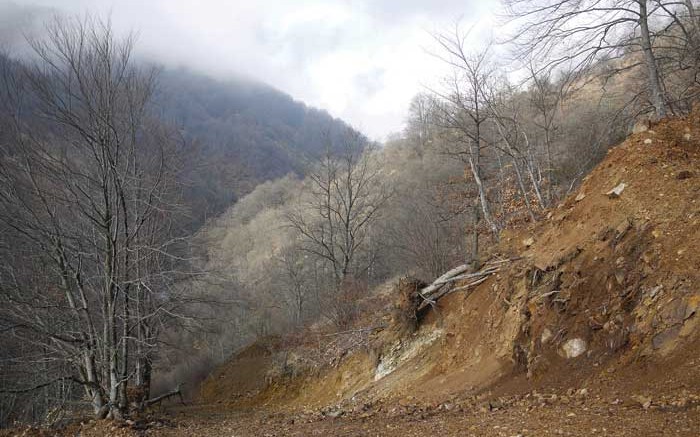VANCOUVER — It has been a busy year so far for Vancouver-based explorer Euromax Resources (EOX-V) and its diverse portfolio of base and precious metal projects across emerging jurisdictions in southeastern Europe. Euromax has locked down a sizeable financing, filed a preliminary economic assessment (PEA) on its flagship Ilovitza gold-copper project in Macedonia and completed a resource update at its Trun gold project in Bulgaria.
Given the pedigree of Euromax’s management team, it’s no surprise that the company is raising capital despite tough equity markets. Euromax’s senior management is composed largely of former executives from European Goldfields, which was acquired in a friendly US$2.5-billion takeover by Eldorado Gold (ELD-T, EGO-N) in early 2012.
In March Euromax closed an $8-million non-brokered private placement that saw the company issue 14.8 million shares at 54¢ per share. The financing topped up Euromax’s treasury and left the company with $8.4 million in working capital to accelerate its development activities at Ilovitza, as well as chip away at resource updates at Trun and its KMC polymetallic project in Serbia.
Euromax completed its PEA at Ilovitza in October 2012, while also receiving approval on the project’s environmental impact study from the Macedonian government. The company’s base case at Ilovitza involves an 8,000-tonne-per-year operation that focuses on in-pit sulphide resources totalling 22.2 million tonnes at 0.228% copper, 0.314 gram gold per tonne and 0.0034% molybdenum. The project also hosts a large inferred resource totalling 369 million tonnes grading 0.211% copper, 0.32 gram gold and 0.0035% moly.
Geologically, Ilovitza is a gold-copper porphyry deposit associated with typical porphyry alteration. Euromax has determined it can achieve 83% gold and 90% copper recoveries from sulphide materials through conventional copper flotation, which will produce saleable copper-gold concentrate.
Euromax’s base-case scenario carries a US$404-million capital cost that would result in a 7.6-year payback period, a US$252-million pre-tax net present value (NPV) and a 10.8% internal rate of return at a 5% discount rate. The mine would produce 133,000 oz. gold and 24,000 tonnes copper annually at cash costs of between US$600 and US$650 per oz. on a gold-equivalent basis.
Adjusting some of the output variables in Ilovitza’s study could lead to improved economics. Euromax has contemplated a 12,000-tonne-per-year operation that would bump development costs to US$474 million, but also drop the payback period to six years, and increase the NPV to US$352 million.
The company drilled 12,000 metres in 2012 to improve its resource classification on material within the potassic core of the porphyry, where grades tend to be higher than in the surrounding phyllic zone. The updated drilling data will form the basis for a prefeasibility study that could lead to construction by mid-2015.
Euromax hit another milestone when it released a new gold-silver resource estimate on Trun in late May. The company had been forced to withdraw an estimate released in 2011 following a review by the British Columbia Securities Commission. Trun’s new resource focuses on six vein sets, including: Logo, Ruy, Nadeja, KD, Zlata and K2. The property hosts an intrusion-related gold system within two granite bodies that form topographic highs —namely Big Hill in the north, and Little Hill in the south.
Euromax completed 5,800 metres at Trun in 2012 and delineated a total of 16 million inferred tonnes that host 516,000 oz. gold and 8 million oz. silver. Most of the gold resource lies in Logo, which holds 9.4 million tonnes averaging 1.13 grams gold for 334,000 contained oz., while the silver resource is predominantly at K2, where Euromax delineated 3.9 million tonnes grading 45.41 grams silver for 5.7 million contained oz.
The company used three-year trailing average metal prices at US$1,507 per oz. gold and US$29.24 per oz. silver, and is assuming 100% recoveries on both metals.
Going forward, Euromax will focus on two more vein sets that could be incorporated into future resource estimates. At Nadejda Northeast the company hit 6.9 metres grading 8.47 grams gold in hole TC1178 from 386 metres depth, while at Zlata South hole C615 cut 10.6 metres averaging 8.18 grams gold from 180 metres depth.
In mid-February Euromax released results from another 7,000-metre drill program at KMC, where mineralization includes thick sequences of gold-copper skarns, gold skarns, zinc-lead-copper-gold skarns and volcanic-hosted gold mineralized silica breccias.
The company focused the drilling at its Copper Canyon skarn on the southern portion of the property, where it intends to proceed with a maiden resource estimate. Highlights from the 2012 program include 116 metres grading 0.71 gram gold from 397 metres depth in hole 1246, and 16 metres carrying 2.63 grams gold from 239 metres depth on hole 1257.
With a healthy cash balance in its treasury and continued support from European financial institutions — Investec Bank owns a 10.9% stake, and Richmond Capital holds a 14.6% equity interest — Euromax is poised to continue to hit milestones and maintain a steady news flow through the remainder of 2013.
The company closed at 41¢ at press time, and had 85 million shares outstanding for a $35-million market capitalization. Euromax trades within a 52-week range of 31¢ to $1.62 per share.


Be the first to comment on "Euromax forges ahead in southeastern Europe"